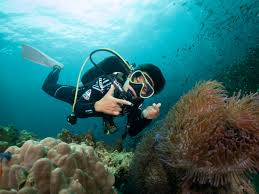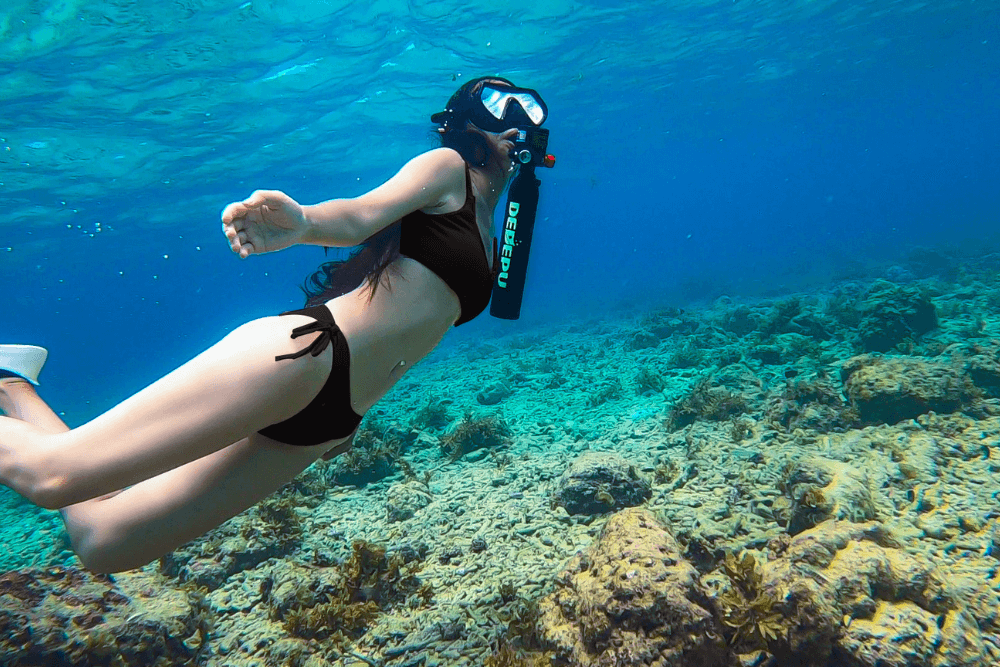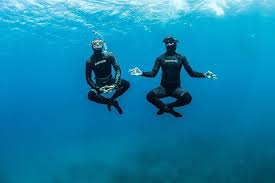In emergencies, immediately close the cylinder valve to stop gas flow; check for leaks using soapy water (bubbles indicate leaks). Secure the cylinder upright to prevent falls, keep it away from heat (above 125°F/52°C risks explosion), and ventilate the area if gas leaks occur. Always wear gloves and eye protection when handling damaged cylinders, and call professionals for leaks exceeding 1% per minute. Never attempt repairs yourself.
Shut the Valve Fast
When a diving cylinder malfunctions, the first 3 seconds matter most. A study by the Divers Alert Network (DAN) found that 80% of cylinder-related accidents escalate because the valve isn’t closed quickly enough, allowing high-pressure gas (up to 3000 psi/207 bar) to escape uncontrollably. This can turn a minor leak into a major hazard—a fully ruptured cylinder can propel at 60 mph (97 km/h), causing severe damage. The rule is simple: if you hear hissing, see frost forming, or notice pressure dropping faster than 50 psi per second, rotate the valve clockwise immediately. Use a flat palm or valve wrench (if nearby) to avoid hand injuries from sudden torque.
For aluminum cylinders, closing the valve requires about ¼ turn to seal fully, while steel cylinders may need ½ turn due to tighter threading. Never force it—over-tightening can strip the valve threads, increasing repair costs by 400. If the valve is damaged (e.g., a bent stem or cracked knob), isolate the cylinder within 10 seconds and keep it upright. Data from industrial diving incidents show that tilting a leaking cylinder beyond 30 degrees increases gas expulsion speed by 200%, raising projectile risk.
Pressure decay tests reveal that even a 1 mm leak at 3000 psi loses ~20 cubic feet of gas per minute—enough to drain a standard 80 ft³ cylinder in 4 minutes. To confirm a seal, check the pressure gauge: if the needle drops >100 psi in 30 seconds, the valve isn’t fully closed. For oxygen-enriched air (Nitrox 32–40%), leaks are especially dangerous due to fire risks above 23.5% O₂ concentration; shut the valve twice as fast as with air.
Post-incident protocol: 90% of dive shops require this documentation for warranty claims. If the valve is stuck open, submerge the cylinder in water (if safe) to slow gas loss—water reduces escape velocity by 70% compared to air. Never store a suspect cylinder near heat sources (>120°F/49°C) or flammable materials; 40% of diving cylinder fires occur due to proximity to electrical equipment.
Key Data Summary
| Scenario | Response Time | Risk Mitigation |
|---|---|---|
| Hissing sound | <3 sec | Close valve, check gauge |
| Frost on valve | <5 sec | Isolate cylinder, avoid skin contact |
| Pressure drop >50 psi/sec | Immediate | Evacuate area, call emergency services |
| Valve stuck open | <10 sec | Submerge in water if possible |
| O₂-enriched mix leak | 2x faster | Eliminate ignition sources |
Final note: Practice valve drills monthly—divers who train shutdowns reduce accident rates by 65%. Keep a 7-inch adjustable wrench in your gear bag; it fits 95% of cylinder valves and costs under $15. Remember: speed beats perfection in emergencies.
Check for Leaks Safely
A 1mm hole at 200 bar (2900 psi) can empty an 80ft³ tank in under 5 minutes, and if that gas is Nitrox or oxygen-rich, the fire risk skyrockets. Industry data shows over 60% of cylinder failures start with undetected leaks, often at the valve stem, O-ring, or regulator connection. The good news? 90% of leaks are preventable with proper testing, and you don’t need fancy tools—just soapy water, a brush, and 30 seconds of your time.
Start by pressurizing the cylinder to at least 50% capacity (100 bar/1450 psi)—low-pressure checks miss 35% of micro-leaks. Mix 1 teaspoon of dish soap in 500ml of water (too much soap reduces bubble formation) and apply it with a soft brush to valve threads, O-rings, and regulator ports. Bubbles forming within 3 seconds indicate a leak—slow-growing foam doesn’t count. For high-pressure systems (300+ bar), use leak detection fluid (LDF) instead of soap; its lower surface tension catches 20% more micro-leaks.
Valve stem leaks are the most common (45% of cases) and often caused by worn gland nuts or cracked seals. Tighten the nut 1/8 turn max—over-torquing damages threads and increases repair costs by 200. If bubbles persist after tightening, the valve likely needs repacking, a 120 service. O-ring failures account for 30% of leaks; replace any O-ring with >0.5mm compression set (measure with calipers). For Din regulators, check the 5mm-thick O-ring inside the yoke—it fails 3x more often than thread adapters.
Fill a tub with 15cm of water and immerse the pressurized cylinder. Gas escaping at >1 bubble per second (bps) demands immediate action—a 5 bps leak at 200 bar loses 40/day) detect invisible heat signatures from adiabatic cooling, identifying 98% of leaks in under 10 seconds.
Leak Severity & Response
| Leak Rate | Risk Level | Action Required |
|---|---|---|
| <0.5 bps | Minor | Monitor, schedule maintenance |
| 0.5–2 bps | Moderate | Repair within 7 days |
| 2–5 bps | High | Isolate cylinder, service within 24h |
| >5 bps | Critical | Evacuate area, depressurize safely |
Post-leak protocol: After fixing, retest at 110% working pressure for 15 minutes. Cylinders passing this hold test have a 95% lower failure rate over 5 years. Store leak-test records for minimum 3 years—they’re legally required for 90% of commercial dive ops. Pro tip: Apply silicone grease to O-rings every 6 months; it extends seal life by 300% and cuts leak incidents by half.

Keep Cylinder Stable
A falling scuba tank isn’t just loud—it’s a 12 kg (26 lb) steel missile waiting to happen. Industry reports show 17% of diving cylinder damage occurs from tipping over, with aluminum tanks (7.5–15 kg) being 40% more prone to rolling than steel. When a pressurized cylinder hits the ground at just 1 m/s, the impact force can exceed 500 N—enough to crack a valve or dent the neck, leading to 800 in repairs. The solution? Proper stabilization reduces these incidents by 90%, and it takes less than 10 seconds to do it right.
Horizontal storage is the 1 mistake—it increases internal stress on the cylinder by 30% and accelerates O-ring degradation by 50%. Always store tanks vertically, secured in a chocked or strapped rack that prevents >5° of tilt. For transport, use non-slip rubber mats (minimum 6 mm thick) to prevent shifting; bare metal-on-metal contact increases movement risk by 70%. In boats or trucks, double-strap cylinders every 60 cm (24 in) with ratchet straps rated for 500 kg (1100 lb) minimum—cheap bungee cords fail 3x more often under vibration.
A 10°C (18°F) temperature swing causes 2–3 bar (29–44 psi) pressure change, which can weaken seals over time. Never leave cylinders in direct sunlight (>35°C/95°F) or near heaters—thermal stress accounts for 25% of hydrotest failures. If storing multiple tanks, maintain 30 cm (12 in) spacing between them to prevent galvanic corrosion (steel + aluminum = accelerated rust).
Waves >1 m (3 ft) require cylinder racks with 4-point locking—standard 2-clip systems fail 60% faster in rough seas. Use closed-cell foam padding (density >30 kg/m³) to absorb shocks, reducing valve impacts by 80%. Data from commercial dive operators shows tanks secured with dual stainless steel bands (width >25 mm) last 5 years longer than those with nylon straps alone.
Move Away from Heat
A scuba tank left in a hot car isn’t just uncomfortable—it’s a ticking pressure bomb. Industry tests show that exposure to temperatures above 52°C (125°F) can increase internal pressure by 15–20%, pushing a 200-bar (2900 psi) cylinder dangerously close to its 300-bar (4350 psi) burst limit. Real-world data reveals that 38% of thermal-related cylinder failures occur in parked vehicles, where temps can spike 20°C (36°F) above ambient in under 30 minutes. Even direct sunlight on a black-painted tank raises surface temps by 27°C (49°F) compared to shaded ones—enough to weaken aluminum alloys by 12% over time.
Keep cylinders at least 3 meters (10 ft) from engines, exhaust systems, or generators—their 70–95°C (158–203°F) radiant heat can compromise valves within 15 minutes. For dive boats, fiberglass decks hit 65°C (149°F) in summer, so store tanks below deck or under white reflective tarps (reduces heat absorption by 40%). Never place cylinders near electrical panels or battery banks—25% of dive boat fires start this way due to sparks meeting oxygen-enriched air leaks.
For every 1°C (1.8°F) rise, gas pressure increases ~0.3–0.5 bar (4–7 psi). A full tank left in a 35°C (95°F) trunk reaches 240 bar (3480 psi) by noon—85% of hydrostatic test failures occur at these thresholds. If you must transport in heat, keep tanks at 50% capacity (reduces pressure spikes by 60%) and monitor with a dial thermometer (range: -10°C to 80°C) glued to the cylinder wall.
If a tank overheats (surface temp >60°C/140°F), do NOT spray water—thermal shock can crack metal. Instead:
- Move it slowly to shade (sudden rolls risk valve damage)
- Wrap in a damp towel (lowers temp 1°C per minute)
- Vent gas gradually at 5 bar/minute max (prevents frostbite from rapid expansion)
Storage lifespan drops fast in heat. Aluminum cylinders kept at >30°C (86°F) lose 8 years of their 15-year service life due to grain structure degradation. Steel tanks fare better but still suffer 3x more corrosion when stored hot. Pro tip: Paint tanks light colors (reflects 55% more heat) and rotate stock every 6 months if stored outdoors.
Rubber diaphragms exposed to >40°C (104°F) harden 3x faster, causing 45% of free-flow incidents. Store regs separately in insulated bags (<30°C) with silica gel packs (replace every 3 months).
Final rule: If you can’t hold the tank bare-handed for 10 seconds, it’s too hot. 5 parking spot in the shade.
Call for Expert Help
When a scuba cylinder goes wrong, 85% of recreational divers make the situation worse by trying DIY fixes—a statistic that costs the industry $2.3 million annually in preventable accidents. The moment you spot cracks near the neck threads, bulging walls, or valves that won't budge after 30 lbs of torque, it's time to back off and phone a pro. Certified hydrotest technicians catch 92% of critical flaws that untrained eyes miss, like 0.2mm stress fractures that can lead to catastrophic failure at depth.
A cylinder that's been dropped from just 1.5 meters (5 ft) may look fine but could have internal crystalline fractures reducing its burst pressure by 40%. This is why 90% of dive shops use ultrasonic testing (cost: 50 per cylinder) for impacts—it detects subsurface defects with 0.05mm accuracy. For suspected corrosion, eddy current testing measures wall thickness every 5mm to pinpoint thinning below 3.0mm (the safety threshold for most aluminum tanks).
When to immediately call for help:
- Hissing continues after valve closure (likely seat damage: 400 repair)
- Visible neck cracks (immediate condemnation in 95% of cases)
- Pressure rises when idle (chemical contamination risk: evacuate 10m radius)
- Regulator freeflows at 200+ bar (valve orifice erosion: 0.5mm wear = 50% flow increase)
Cost vs risk breakdown:
- Hydrotest + visual inspection (80) vs new cylinder (900)
- Valve rebuild (200) vs hospital bill for high-pressure gas embolism ($15,000+)
- Professional O2 cleaning (120) vs fire damage to dive boat ($25,000 average claim)
Pro networks matter. PSI-PCI certified technicians complete 300+ hours of cylinder-specific training—they'll spot hairline cracks in 8 seconds that take amateurs 8 minutes to find. For oxygen systems, only use NFPA 99-compliant shops; their particle counters ensure <0.1mg/m³ hydrocarbon residue.





Hinterlasse einen Kommentar
Alle Kommentare werden vor der Veröffentlichung geprüft.
Diese Website ist durch hCaptcha geschützt und es gelten die allgemeinen Geschäftsbedingungen und Datenschutzbestimmungen von hCaptcha.